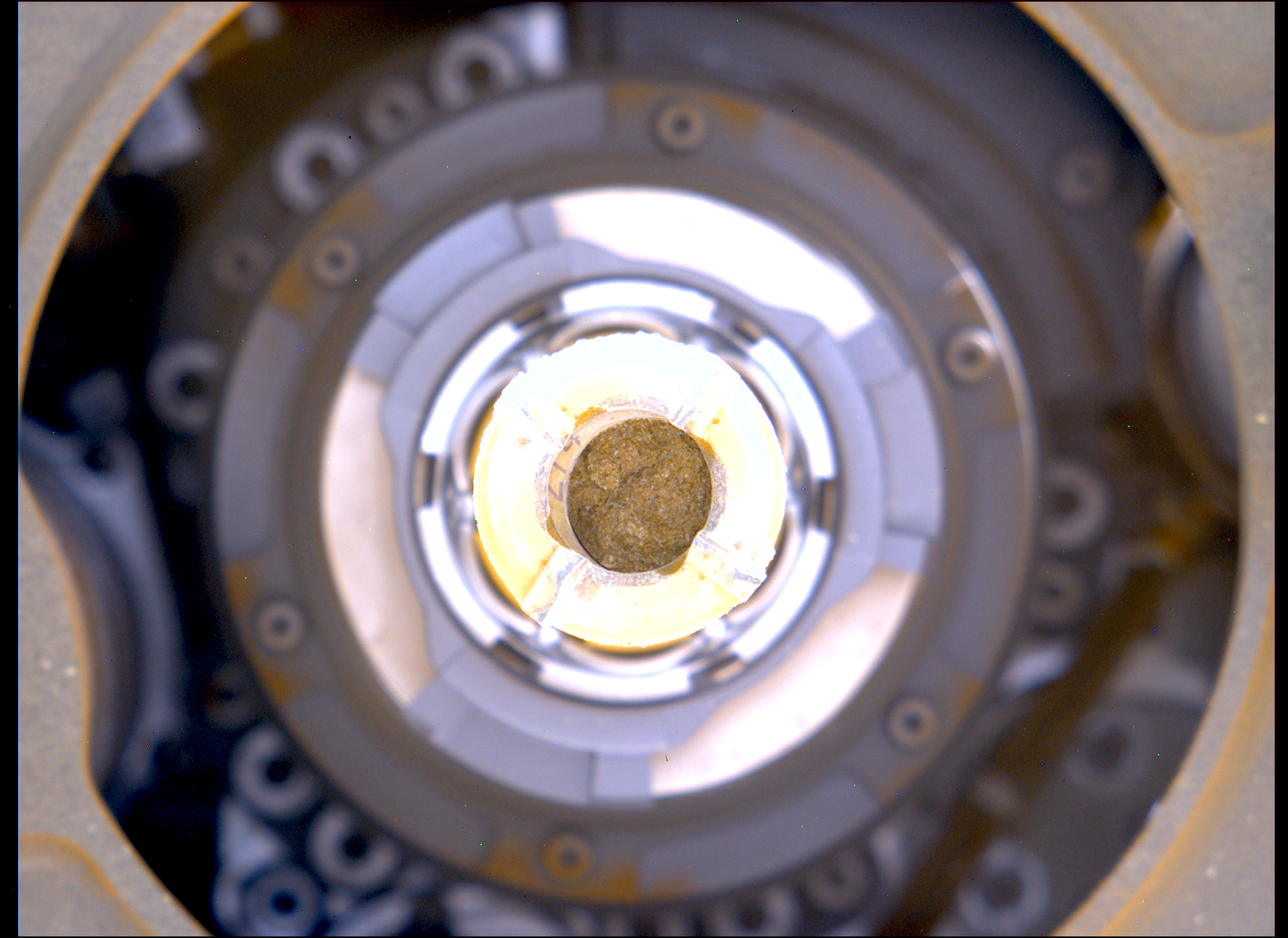Perseverance Mars rover collects 1st sample of new science campaign (photos)
The sample is an exciting win for the rover team.
NASA's Perseverance Mars rover has drilled its 16th sample from an intriguing rock, inaugurating its latest assignment that has it exploring the top of an ancient river delta.
The newly collected sample, the size of a piece of classroom chalk, is safely tucked in Perseverance's belly, NASA announced on Friday (March 31). It was drilled from a rock that could conceivably harbor evidence of ancient microbial life, if life ever existed on Mars, mission team members said.
The car-sized Perseverance has been collecting samples and hunting for signs of life on Mars since it landed inside the Red Planet's Jezero Crater in February 2021. The rover has been venturing into new landscapes as part of specific science campaigns, the latest of which has the six-wheeled robot exploring the top of Jezero's ancient river delta. (Jezero contained a big lake and a delta billions of years ago.)
Related: How NASA will launch Mars samples off the Red Planet
On March 30, which was Perseverance's 749th Martian day on the Red Planet, the rover used the drill at the end of its 7-foot-long (2 meters) long robotic arm to make a hole in a rock dubbed "Berea" on top of the Jerezo delta. Within 30 minutes, the rover had a cylinder-shaped bit of Martian rock stored in one of its 43 titanium sample tubes, according to the NASA statement. To date, the rover has collected 19 of a planned 38 samples, 16 of which were gathered by drilling into Martian rocks.
"Back to the grind!" mission team members shared via Perseverance's Twitter account on Friday. "My coring drill is working well, and my team's excited about what this rock may hold."
Scientists think the newly sampled Berea rock may have formed when an ancient river carried its building blocks — various sediments and minerals that make up the rock — downstream into Jezero from somewhere outside the crater.
Breaking space news, the latest updates on rocket launches, skywatching events and more!
The latest sample onboard Perseverance is an exciting win for scientists. The Berea rock is rich in carbonate minerals, which can be created as a byproduct of life and are also fantastic recorders of its evidence for billions of years. (Carbonates can also be created by abiotic processes, however, so they in themselves are not solid evidence of life.)
"If biosignatures were present in this part of Jezero Crater, it could be a rock like this one that could very well hold their secrets," Katie Morgan, deputy project scientist for Perseverance at NASA's Jet Propulsion Laboratory in California, said in the March 31 statement.
Carbonate rocks materialize when carbon dioxide and water react with minerals usually found in volcanic rocks, such as calcium and iron. So the fact that the Berea rock is carbonate-rich could confirm that rivers, ponds, and lakes abundantly flowed on the Martian surface 3.5 billion years ago. Also, these water bodies may have supported life, whose evidence scientists are hoping to spot in the samples just collected by the Mars rover.
On Earth, details of evolution of ancient microbial life are protected for billions of years in the form of carbonate-rich fossils. Sea shells, for example, are made of calcium carbonate, which helps them become hard enough to survive for eons.
As one example of how shells become pristine information holders of ancient life, they change in size and thickness in response to the growth of the animals that live inside them, as well as to the temperatures in the surrounding environment. This way, the history of these life forms is archived in the intricate patterns of the shells.
Similarly, Perseverance scientists hope to unveil valuable information about past life on Mars, if it ever existed, and how the Red Planet's environment has changed over time, by studying the rover's samples in detail. Such work will be done primarily on Earth, if all goes according to plan: A joint NASA-European Space Agency Mars sample return campaign will haul Perseverance's samples to our planet, perhaps as soon as 2033.
Perseverance is now rolling onto its next location, which the rover team calls "Castell Henllys."
Follow Sharmila Kuthunur on Twitter @Sharmilakg. Follow us on Twitter @Spacedotcom or Facebook.

Sharmila Kuthunur is an independent space journalist based in Bengaluru, India. Her work has also appeared in Scientific American, Science, Astronomy and Live Science, among other publications. She holds a master's degree in journalism from Northeastern University in Boston.


